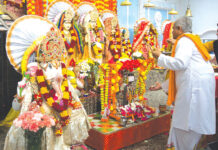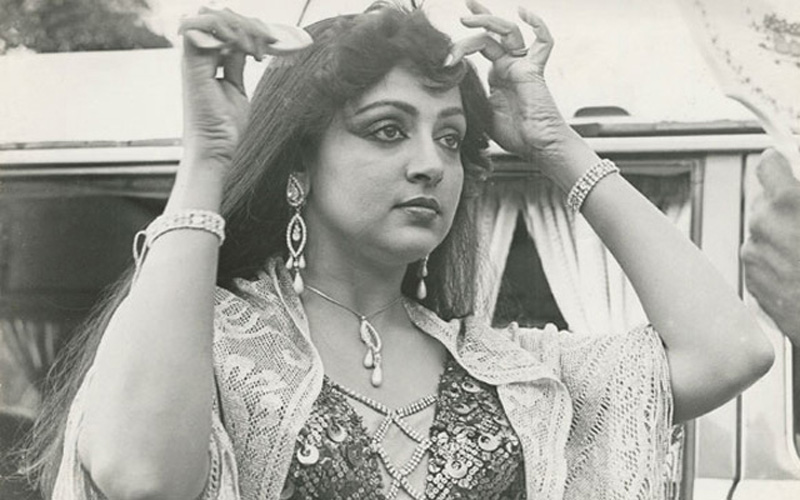With Shani Shingnapur and Sabarimala temples being in the news over gender discrimination for not letting women enter the shrine either when they are on their menstrual cycle or not letting then in at all, here’s a look at some other places of worship across India which bar the entry of women:
1: Kamakhya Temple (Guwahati, Assam)
The temple dedicated to Goddess Kamakhya Devi, nestled high up on the Nilachal Hill, in the west of Guwahati, Assam is one of the oldest of the 51 Shakti Pithas. Interestingly, Kamakhya Devi temple has no sculpture to worship, only Kamakhya’s yoni or vagina. What is strange is that a natural spring in Assam keeps the stone moist all the time. But ironically, the temple doesn’t allow women who are menstruating to enter the temple.
2: Lord Kartikeya Temple (Pehowa, Haryana and in Pushkar, Rajasthan)
This temple celebrates the celibate (Brahmachari) form of Lord Kartikeya and therefore bars women from entering the temple. The stories surrounding this 5th century BC shrine, which is situated near the Punjab-Haryana border, states that any women visiting it will be cursed even if they are seeking blessings.
Women are strictly forbidden in the Pushkar temple since it is believed that Kartikeya becomes really aggressive if a woman enters the temple.
3: Mawali Mata Mandir (Dhamtari, Chhattisgarh)
The reason for women being barred at this temple is a little more recent. A priest had once dreamt of the deity rising from the earth and telling him that since she was a maiden, women should not be allowed in.
4: Haji Ali Dargah (Mumbai, Maharashtra)
Situated about 500 yards from the Mumbai shoreline in the middle of the Arabian Sea, the six-hundred-year-old Haji Ali Dargah — a mosque and dargah — houses the tomb of the Pir Haji Ali Shah Bukhari. The restriction imposed on women came into being somewhere between March 2011-June 2012. A petition challenging the trust’s decision of banning entry of women to the ‘sanctum sanctorum’ is being heard by Bombay High Court. Defending their ban on women from entering the shrine’s inner sanctum (mazaar), the trustees of the iconic Haji Ali Dargah in Mumbai told the Bombay High Court in October 2015 that “entry of women in close proximity of grave of a male Muslim saint is a grievous sin in Islam.”
5: Mangal Chandi Temple, (Bokaro, Jharkhand)
The 200-year-old temple restricts entry of women and only men devotees can offer puja as people believe it would displease the deity and invite misfortune. Hundreds of devotees from Jharkhand and West Bengal are visiting the temple situated at Kusmataad village under Kasmar Block, about 40 kilometers from district headquartres. According to the head priest women are barred from entering inside the temple, but can offer puja from a distance of about 50 meters outside the temple.
6: Sree Padmanabhaswamy Temple (Malayinkeezhu, Kerala)
In the Sree Krishna temple situated in Malayinkeezhu village of Thiruvananthapuram, women are denied entry into the core structure (called the nalambalam) of the temple. The tradition is from centuries ago and was instituted because two Pushpanjali Swamiyars of Sree Padmanabhaswamy Temple, who were celibates, had to spend six months at the Malayinkeezhu temple. It is believed that the ban was enforced during the reign of the erstwhile Travancore ruler Sree Moolam Thirunal.
7: Patbausi Satra (Barpeta, Assam)
15th century saint Srimanta Sankardeva established this monastery in Assam, which disbarred women into the sanctum sanctorum until 2010 before the then Assam Governor JB Patnaik entered the Vaishnavite temple’s inner sanctorum with 20 women, performed rituals and offered prayers.
Even though the Governor persuaded the spiritual head of the Satra (Sattradhikar) to shun the century-old tradition, the ban has been reimposed.
8: Jain Temple (Ranakpur, Rajasthan)
One of the five major Jain pilgrimage sites, this 15th century structure in Rajasthan prohibits the entry of menstruating women. Among many things women essentially need to do, while entering the temple or inside it, is to ensure that their legs are well covered below their knees.
9: Lord Ayyappa Temple (Sabarimala, Kerala)
The Lord Ayyappa temple in Sabarimala in the state of Kerala located at the Periyar Tiger Reserve in the Western Ghat mountain ranges of Pathanamthitta District. It is one of the largest annual pilgrimages in the world, with an estimated over 100 million devotees visiting every year. Sabarimala is believed to be the place where the Hindu god Ayyappan meditated after killing the powerful demoness Mahishi. The temple bans girls and women between the ages of 10 to 50 — that is if they are of menstruating age because Ayyappan is a Bramhachari (celibate).
10: Shani Shingnapur Temple (Ahmednagar, Maharashtra)
Shani Shingnapur, is a town almost 70 km from Shirdi in Maharashtra’s Ahmednagar district. The temple, which is devoted to Lord Shani — the personification of planet Saturn — traditionally, bars women from offering prayers at the shrine. Shani Shingnapur is also globally renowned as the only village where the houses do not have doors and locks, and even a local branch of a nationalised bank does not have locks as there is no fear of thieves. The unique open temple has no walls or a roof. A self-emerged (svayambhu) five-foot tall black stone stands on a platform and is worshipped as Shanidev. The temple platform stands in the centre of the small village, also known as Sonai. However, barring the temple priests, everybody is forbidden from climbing the nine steps up to the actual stone idol that represents the deity. Everybody must only offer prayers from below the platform. (Courtesy: Mid-day)
READ: 10 amazing things that ancient India gave to the world








